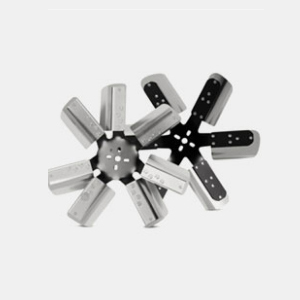-
 Afrikaans
Afrikaans -
 Albanian
Albanian -
 Amharic
Amharic -
 Arabic
Arabic -
 Armenian
Armenian -
 Azerbaijani
Azerbaijani -
 Basque
Basque -
 Belarusian
Belarusian -
 Bengali
Bengali -
 Bosnian
Bosnian -
 Bulgarian
Bulgarian -
 Catalan
Catalan -
 Cebuano
Cebuano -
 China
China -
 Corsican
Corsican -
 Croatian
Croatian -
 Czech
Czech -
 Danish
Danish -
 Dutch
Dutch -
 English
English -
 Esperanto
Esperanto -
 Estonian
Estonian -
 Finnish
Finnish -
 French
French -
 Frisian
Frisian -
 Galician
Galician -
 Georgian
Georgian -
 German
German -
 Greek
Greek -
 Gujarati
Gujarati -
 Haitian Creole
Haitian Creole -
 hausa
hausa -
 hawaiian
hawaiian -
 Hebrew
Hebrew -
 Hindi
Hindi -
 Miao
Miao -
 Hungarian
Hungarian -
 Icelandic
Icelandic -
 igbo
igbo -
 Indonesian
Indonesian -
 irish
irish -
 Italian
Italian -
 Japanese
Japanese -
 Javanese
Javanese -
 Kannada
Kannada -
 kazakh
kazakh -
 Khmer
Khmer -
 Rwandese
Rwandese -
 Korean
Korean -
 Kurdish
Kurdish -
 Kyrgyz
Kyrgyz -
 Lao
Lao -
 Latin
Latin -
 Latvian
Latvian -
 Lithuanian
Lithuanian -
 Luxembourgish
Luxembourgish -
 Macedonian
Macedonian -
 Malgashi
Malgashi -
 Malay
Malay -
 Malayalam
Malayalam -
 Maltese
Maltese -
 Maori
Maori -
 Marathi
Marathi -
 Mongolian
Mongolian -
 Myanmar
Myanmar -
 Nepali
Nepali -
 Norwegian
Norwegian -
 Norwegian
Norwegian -
 Occitan
Occitan -
 Pashto
Pashto -
 Persian
Persian -
 Polish
Polish -
 Portuguese
Portuguese -
 Punjabi
Punjabi -
 Romanian
Romanian -
 Russian
Russian -
 Samoan
Samoan -
 Scottish Gaelic
Scottish Gaelic -
 Serbian
Serbian -
 Sesotho
Sesotho -
 Shona
Shona -
 Sindhi
Sindhi -
 Sinhala
Sinhala -
 Slovak
Slovak -
 Slovenian
Slovenian -
 Somali
Somali -
 Spanish
Spanish -
 Sundanese
Sundanese -
 Swahili
Swahili -
 Swedish
Swedish -
 Tagalog
Tagalog -
 Tajik
Tajik -
 Tamil
Tamil -
 Tatar
Tatar -
 Telugu
Telugu -
 Thai
Thai -
 Turkish
Turkish -
 Turkmen
Turkmen -
 Ukrainian
Ukrainian -
 Urdu
Urdu -
 Uighur
Uighur -
 Uzbek
Uzbek -
 Vietnamese
Vietnamese -
 Welsh
Welsh -
 Bantu
Bantu -
 Yiddish
Yiddish -
 Yoruba
Yoruba -
 Zulu
Zulu
Aquatic Insect Nets - High-Quality Solutions for Insect Collection
Aquatic insects play a vital role in freshwater ecosystems, acting as important indicators of environmental health and providing essential food for various aquatic and terrestrial organisms. To study and observe these fascinating creatures, entomologists and ecologists often utilize specialized tools, one of the most crucial being the aquatic insect net.
An aquatic insect net is designed specifically for sampling insects that inhabit water bodies such as rivers, lakes, and wetlands. These nets typically feature a fine mesh, which allows for the capture of small aquatic organisms while preventing their escape. The basic design consists of a sturdy frame, often made from aluminum or durable plastic, with a handle for easy maneuverability, and a bag-like netting that can be submerged in water.
Using an aquatic insect net is a straightforward yet rewarding process. Researchers begin by selecting a site ideal for sampling, often choosing areas with abundant aquatic vegetation or near the edges of streams where insects are likely to thrive. Once a location is chosen, the net is swept through the water in a series of quick, deliberate movements. This method stirs up the sediment and vegetation, encouraging aquatic insects to become ensnared in the fine mesh of the net.
After collecting samples, researchers carefully transfer the contents of the net into a container filled with water. This step is crucial to preserve the specimens until they can be further analyzed. The collection process not only includes insects but may also capture other aquatic organisms such as tadpoles or small crustaceans, all of which contribute to the biodiversity of the ecosystem.
aquatic insect net

Once in the laboratory, collected specimens can be identified, counted, and studied. This analysis helps scientists gain insights into the health of the aquatic environment. For instance, a high diversity of aquatic insects often indicates a healthy ecosystem, while a decline in species could signify pollution or habitat degradation.
Moreover, the study of aquatic insects is not only important for ecological assessments but also beneficial for understanding the broader implications of biodiversity and conservation efforts. These insects form an integral part of the food web, providing sustenance for fish and other wildlife, making their study all the more relevant in the face of environmental changes.
In conclusion, aquatic insect nets are indispensable tools for researchers exploring the intricate world of aquatic ecosystems. Through their effective use, scientists can gather vital data that aids in preserving aquatic biodiversity and promoting ecological health. The delicate interplay of life that aquatic insects partake in serves as a reminder of the importance of sustaining our natural environments.
-
Why Construction Steel Mesh is the Backbone of Modern InfrastructureNewsJun.27,2025
-
The Ultimate Solution for Versatile Industrial and Consumer ApplicationsNewsJun.27,2025
-
Smart Breeding Starts Here: The Ideal Breeder Net for GuppiesNewsJun.27,2025
-
Maximize Your Harvest with Smart NetNewsJun.27,2025
-
High-Performance Steel Mesh Solutions for Modern IndustryNewsJun.27,2025
-
Durable Solutions for Modern Agriculture and LandscapingNewsJun.27,2025











